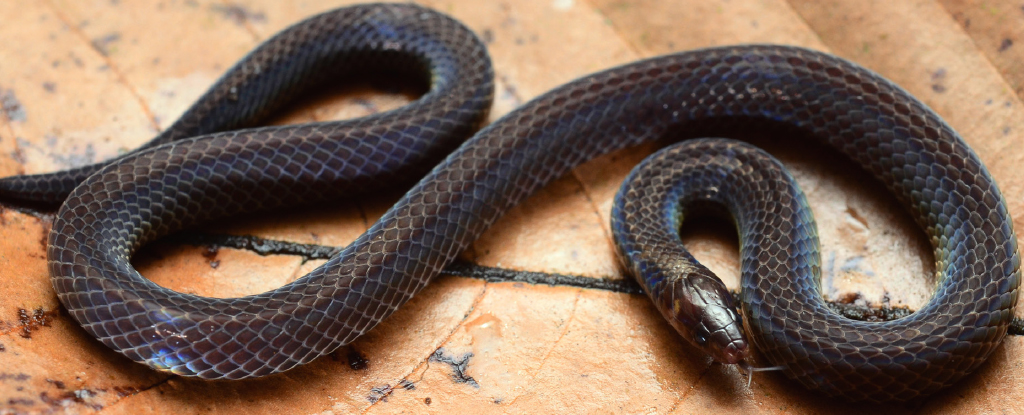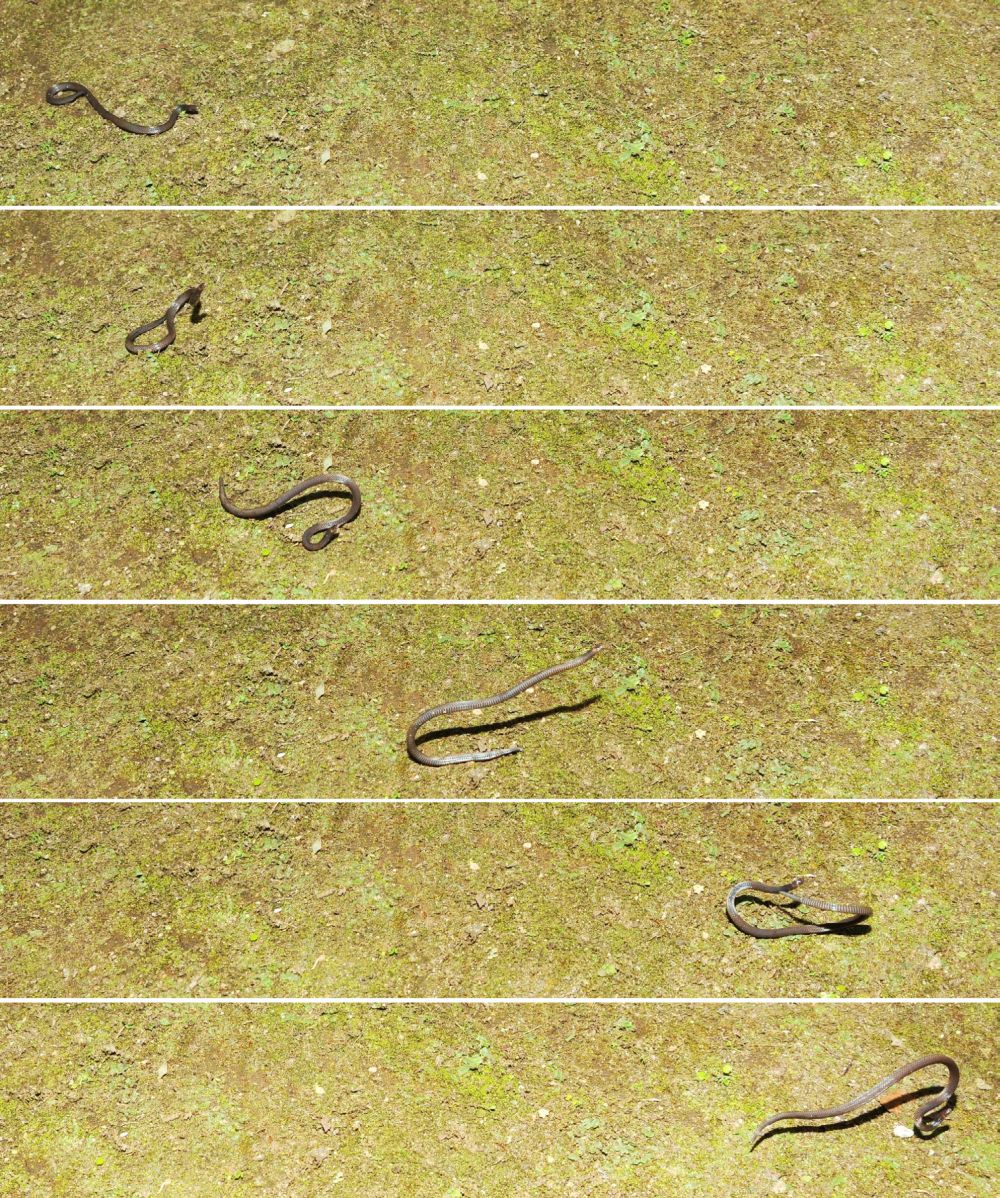Snakes cartwheel to get out of danger in new tactic - study
This small, semi-fossorial snake is known to be secretive and nocturnal and is often found hiding in the leaf litter or under rocks during the day.
A recent study on the defense mechanisms of snakes has uncovered a surprising new tactic used by the Dwarf Reed Snake Pseudorabdian longiceps.
This small, semi-fossorial snake, which is commonly found throughout Southeast Asia and the Philippines, is known to be secretive and nocturnal and is often found hiding in the leaf litter or under rocks during the day.
According to a study published in the scientific journal Biotropica, the Dwarf Reed Snake curls up and rolls away from danger, a strategy that has been observed in only a few other species, including the Mount Lyell Salamander and Tepui toads.
Despite its evasive nature, the Dwarf Reed Snake is preyed upon by a variety of predators, including the Striped Coral Snake and the Slaty-backed Forktail.
Studying the cartwheeling snake
The study, conducted by a team of herpetologists, describes a novel escape behavior employed by the Dwarf Reed Snake - cartwheeling. While anecdotal reports of this behavior have been circulating for some time, this is the first time it has been documented in detail, complete with images and a thorough description.
Series of images showing how the snake throws its coils forward in a cartwheeling motion. (Evan Quah)The cartwheeling behavior is an impressive display of agility and coordination, involving the snake flipping its body sideways and then rotating in a circular motion, using its tail and head as pivot points. This movement is repeated several times, with the snake covering a considerable distance with each cartwheel.
The researchers speculate that this behavior may be a way for the Dwarf Reed Snake to confuse predators and make it more difficult for them to capture the snake.
The discovery of this new escape behavior highlights the complex and varied ways in which animals have evolved to avoid predation. Despite their small size and elusive nature, snakes like the Dwarf Reed Snake have developed a range of strategies to evade predators and survive in their environments.
This research provides valuable insights into the behavior and ecology of these fascinating animals and underscores the need for continued study and conservation efforts.
In August 2019, researchers watched a Dwarf Reed Snake crossing a road in Malaysia when it was approached by the researchers. Startled by the presence of humans, the snake began to actively throw its coils into a loop and roll down the hill.
They later caught the snake and observed it cartwheeling multiple times in a flat area alongside the road.
The behavior was studied and classified into four phases by experts and a series of photographs were taken.
The snake's cartwheeling motion was sustained by repeating the recoil and roll maneuver. This is not an isolated incident, as another observer in Lenggong, Perak states, recorded a video of a Dwarf Reed Snake exhibiting the same behavior, which has since been uploaded on YouTube and went viral.
Rolling as a form of escape is a rare phenomenon in nature and while most species that have evolved this mechanism use passive rolling, the Dwarf Reed Snake actively cartwheels by throwing its coils and rolling down hills to escape predators
However, wind-powered somersaults or wheeling have been observed in some animals like tiger beetle larvae and salticid spiders.
Most species, including ants, desert spiders, pill millipede, woodlice, salamanders, toads and pangolins, use gravity to gain momentum and speed during rolling escapes.
What do the researchers say about this behavior?
The researchers believe that the cartwheeling behavior of the Dwarf Reed Snake may be an anti-predator strategy that confuses and startles predators, allowing the snake to escape. The behavior may also disorient predators that rely on olfactory cues, making it harder for them to track their prey.
The scientists noted that more research is needed to fully understand the evolution and purpose of this behavior.
The discovery shed light on the diverse range of tactics used by species to protect themselves from predators and survive in their respective environments. The researchers hope that future studies in Southeast Asia will uncover even more interesting insights into the natural history of these fascinating creatures.
"My colleagues and I were excited when we successfully captured images that documented cartwheeling behavior in this species," corresponding author Evan Seng Huat Quah, Ph.D., of the University Malaysia Sabah said. "We believe that this behavior may be more widespread in other small snake species, especially members of the subfamily Calamariinae, but the lack of records is probably an artifact of the challenges in detecting and observing these secretive species."



No comments:
Post a Comment
Stick to the subject, NO religion, or Party politics